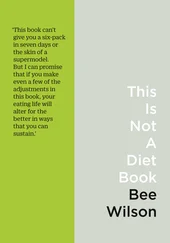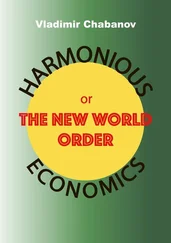For example, it is estimated that the US government fiscal policy added a mere 0.3 per cent to the GDP between 1929 and 1933, against the 31.8 per cent fall during the same period (Dow, Major Recessions , p. 164, table 6.11), while UK fiscal policy added a mere 0.4 per cent, against the 5.1 per cent fall in GDP between 1929 and 1932 (ibid., p. 192, table 6.23).
. Per capita income growth rate for the world fell from 1.31 per cent during 1870–1913 to 0.88 per cent during 1913–50. Maddison, The World Economy , p. 383, table A. 8.
A. Glyn, A. Hughes, A. Lipietz and A. Singh, ‘The rise and fall of the Golden Age’, in S. Marglin and J. Schor (eds.), The Golden Age of Capitalism (Oxford: Oxford University Press, 1990), p. 45, table 2.4.
The average inflation for the ACCs during this period was around 4 per cent. Ibid., p. 45, table 2.4.
C. Reinhart and K. Rogoff, This Time Is Different: Eight Centuries of Financial Folly (Princeton: Princeton University Press, 2009), p. 252,figure 16. 1.
Today, people think of the World Bank as the bank for poor countries, but its first clients were the war-torn economies of Europe. This is reflected in its official name, which is the International Bank for Reconstruction and Development (IBRD). (Emphasis added.)
The ECSC coordinated efforts to upgrade the production facilities in the coal and steel industries. The 1957 Treaty of Rome created the European Atomic Energy Community (Euroatom) as well as the EEC. In 1967, these three communities were integrated to form the European Communities (EC).
Paul Krugman wrote in 2009: ‘Thirty-plus years ago, when I was a graduate student in economics, only the least ambitious of my classmates sought careers in the financial world. Even then, investment banks paid more than teaching or public service – but not that much more, and anyway, everyone knew that banking was, well, boring’ (‘Making banking boring’, The New York Times , 9 April 2009).
Further details can be found in F. Block, ‘Swimming against the current: the rise of a hidden developmental state in the United States’, Politics and Society , vol. 36, no. 2 (2008), and in M. Mazzucato, The Entrepreneurial State: Debunking Private vs. Public Sector Myths (London: Anthem Press, 2013).
Glyn et al., ‘The rise and fall of the Golden Age’, p. 98.
The average inflation rate of Europe reached up to 15 per cent while the US rate also surged above 10 per cent. The UK suffered particularly, with the inflation rate reaching almost 25 per cent in 1975. From Dow, Major Recessions , p. 293,figure 8.5.
Growth rates in per capita income in the ACCs were 1.4 per cent during 1870–1913, 1.2 per cent during 1913–50, and 3.8 per cent during 1960–70. These figures are from Glyn et al., ‘The rise and fall of the Golden Age’, p. 42, table 2.1.
Ibid., p. 45, table 2.4.
It should, however, be noted that the Chilean government has had an important role in the economy even in the country’s neo-liberal phase. CODELCO, the largest copper mining company in the world, which had been nationalized in 1971 by the left-wing Allende government, was kept under state ownership. A number of public and semi-public agencies (such as Fundación Chile) have provided its agricultural producers with subsidized technical consultancy and export marketing help.
S. Basu and D. Stuckler, The Body Economic: Why Austerity Kills (London: Basic Books, 2013), Chapter 2, for further details and analyses.
Being ‘neutral’ countries in the Cold War, these countries had kept their distance from the EU, despite being in Western Europe.
China’s output in 1978 was around $219 billion. World output in that year was about $8,549 billion. Calculated from World Bank, World Development Report 1980 (Washington, DC: World Bank, 1980), pp. 110–11, table 1.
Ibid., pp. 124–5, table 8.
China’s GDP in 2007 was $3,280 billion. World GDP was $54,347 billion. World Bank, World Development Report 2009 (New York: Oxford University Press, 2009), pp. 356–7, table 3. China’s merchandise export was $1,218 billion, while that for the world was $13,899 billion (ibid., pp. 358–9, table 4).
The OECD was founded in 1961, and comprises most Western European countries, Turkey, the US and Canada. By the mid- 1970s, Japan, Finland, Australia and New Zealand were added. Since the mid- 1990s, several former socialist countries (e.g., Hungary and Estonia) and some richer developing countries (Mexico and Chile) have joined it.
At the time of writing (early January 2014), the figures for 2013 were not out, but, on a provisional estimate made on the basis of the OECD data, in the third quarter of 2013 per capita output remained lower than in 2007 in nineteen out of the thirty-four OECD member countries.
There are even more, if we include smaller schools (e.g., the Neo-Ricardian school, the Latin American Structuralist school, feminist economics, ecological economics). The number would be increased if we made sub-schools of some of the schools independent (e.g., different strands listed under the Developmentalist tradition).
Carl Menger is considered to be the founding father of the Austrian school, but some would rightly say that he was, together with Leon Walras and William Jevons, one of the founding fathers of the Neoclassical school. An even more complicated example is Frank Knight, the early twentieth-century economist, who taught at the University of Chicago. He is often thought of as an Austrian economist (no, not by his nationality – he was an American), but he had a lot of Institutionalist influences, and some of his ideas overlap with the Keynesian and the Behaviouralist ones.
Physicists have tried, and failed, to construct what they call the ‘theory of everything’.
. ‘... and in their darkness bind them all’, goes the rest of the sentence.
He then immediately added that ‘they do not make it under circumstances chosen by themselves’, emphasizing that we change our environment but are also its products.
Joseph Schumpeter emphasized that all analysis in economics is preceded by a pre-analytical cognitive act, called vision, in which the analyst ‘visualise[s] a distinct set of coherent phenomena as a worth-while object of [his] analytic efforts’. He pointed out that ‘this vision is ideological almost by definition’, as ‘the way in which we see things can hardly be distinguished from the way in which we wish to see them’. The quote is from J. Schumpeter, History of Economic Analysis (New York: Oxford University Press, 1954), pp. 41–2. I thank William Milberg for pointing me to this quote.
Smith, unlike most other Classical economists, was aware that people have motives besides self-seeking, such as sympathy, passion and adherence to social norms. These motives were the main subjects of The Theory of Moral Sentiments , the companion volume to TWON .
Читать дальше












